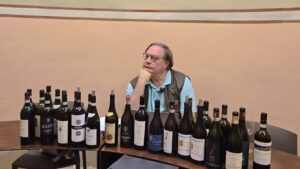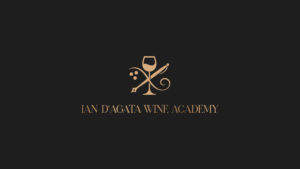Historical Background: The Forgotten Beginnings
The modern story of English sparkling wine did not emerge overnight. Its roots trace back to the years following the Second World War, when a handful of passionate pioneers began planting vineyards across England and Wales. These early viticulturists—often amateurs inspired by continental traditions—experimented with German crossings and hybrid varieties such as Müller-Thurgau, Reichensteiner, Seyval Blanc, and Huxelrebe, bred specifically for cold, marginal climates. Their ambition was humble: to prove that viticulture could survive in British soil, and more importantly, climate.
While these early wines were modest in quality and largely still rather than sparkling, they laid the viticultural and psychological foundation for what would come decades later. By the 1970s and 1980s, their persistence had demonstrated that grapes could ripen reliably in southern England, paving the way for a new generation of winemakers to dream beyond survival. When estates like Nyetimber began planting Chardonnay, Pinot Noir, and Pinot Meunier in 1988, they did so upon the quiet legacy built by those postwar experimenters.
A Changing Climate and a New Vision
If England’s first generation of growers proved viticulture possible, the 21st century confirmed its potential. The country’s average growing-season temperature has risen from around 13°C in the mid-1900s to 14°C in the early 2000s, and by 2025, it has reached approximately 14.5°C. This subtle yet decisive warming has transformed England and Wales from marginal to genuinely viable regions for premium sparkling wine production.
Long daylight hours, combined with cool nights, extend the ripening period, preserving acidity while allowing for steady flavor development. South-facing slopes below 125 meters are ideal, maximizing sunlight exposure while offering protection from prevailing southwesterly winds. These climatic conditions, coupled with the rise of Chardonnay, Pinot Noir, and Pinot Meunier—now accounting for nearly 70% of all vineyards—have positioned southern England as one of the world’s most exciting cool-climate regions.
Today, over 4,200 hectares of vines are cultivated across the UK, with plantings having more than doubled in the past decade. Sparkling wine now represents roughly three-quarters of total production, most of it made in the traditional method, and nearly all consumed domestically. Kent, Sussex, and Hampshire form the heart of this revolution, attracting investments from major Champagne houses such as Taittinger and Pommery—an irony not lost on history.
Of Wealds and Geology: The Truth Beneath the Vines
Much has been said about England’s chalky soils and their similarity to those of Champagne, but the story runs far deeper. As Ian D’Agata reminds us, “the British and French chalks are cousins, not twins.” The Newhaven Chalk Formation in southern England dates from the late Cretaceous period, overlapping but not identical to Champagne’s Senonian period strata. The types of marine organisms that formed these chalk layers, and how their exoskeletons bonded over geological time, produce subtle but meaningful differences in mineral composition and drainage capacity. These distinctions, though invisible to the eye, shape the sensory architecture of the wines. Chalk, sure: but it’s not all the same chalk, and that means differences.
Moreover, not all of England’s best vineyards are planted on chalk. Green sandstone, clay, limestone, and greensand all contribute to the diversity of terroirs. In fact, many top producers such as Ridgeview and Highweald believe clay-rich soils bring balance, texture, and power to their wines—challenging the myth that chalk alone defines greatness. Clay retains water and moderates vine stress during dry years, while greensand provides excellent drainage in England’s famously rainy climate. The complexity of these soils mirrors the complexity of the wines themselves: pure, precise, and distinctive.
Grape Varieties and Appellation System
The contemporary foundation of England’s sparkling wine industry rests on the classic Champagne triad—Chardonnay, Pinot Noir, and Pinot Meunier—which together account for nearly 68% of all vineyard plantings in England and Wales. These varieties, ideally suited to cool climates, produce wines of piercing acidity, fine texture, and remarkable age-worthiness.
According to the English Quality Sparkling Wine PDO (Protected Designation of Origin), six grape varieties are officially authorized: Chardonnay, Pinot Noir, Pinot Meunier, Pinot Noir Précoce (an early-ripening mutation of Pinot Noir), Pinot Blanc, and Pinot Gris. All wines under this designation must be made by the traditional method of secondary fermentation in bottle, aligning with the standards of the world’s leading sparkling wine regions.
While the Champagne trio dominates, a few innovative producers have explored the potential of the lesser-used permitted grapes, particularly Pinot Noir Précoce and Pinot Blanc, to craft wines with distinctive aromatic profiles and more supple textures—an approach that not only broadens stylistic diversity but also mitigates the risks of marginal ripening conditions in cooler vintages.
In June 2022, Sussex became the first UK region to receive its own PDO status, marking a milestone in the formal recognition of English terroir. Sussex PDO wines must be made from grapes grown exclusively within Sussex, primarily from Chardonnay, Pinot Noir, and Pinot Meunier, using the traditional method with a minimum of fifteen months on lees before release. This framework underscores the region’s commitment to quality and its aspiration to establish a benchmark for English sparkling wine on the global stage.
The creation of the Sussex PDO signals a pivotal evolution—from a national-level appellation to a more regionally expressive structure. Together, these dual systems embody the growing sophistication of British viticulture, where precision farming, craftsmanship, and terroir awareness converge to define the emerging “British identity” in sparkling wine
Growing Environment and Regional Distribution
Southern England remains the epicenter of British sparkling wine, accounting for nearly three-quarters of all UK vineyards. Within this landscape, Kent, Sussex, and Hampshire form the historic and qualitative core.
As reported by Wines of Great Britain (2023 Industry Report), Kent alone holds approximately 1,033 hectares under vine, followed by East Sussex and West Sussex, together totaling around 1,043 hectares (473 ha and 570 ha respectively). Hampshire follows with about 380 hectares, and Essex with 325 hectares, illustrating the ongoing expansion of vineyard plantings across the South East. Collectively, these regions represent roughly two-thirds of England’s total vineyard area, emphasizing their crucial role in shaping the nation’s sparkling wine identity.
The region’s success owes much to its cool maritime climate—once marginal for viticulture but now significantly moderated by global warming, with the average growing-season temperature rising from 13°C in the mid-20th century to around 14.5°C by 2025. These long daylight hours and slow ripening conditions favor the development of fine acidity and restrained fruit character, ideal for traditional-method sparkling wines.
The chalk, clay, and greensand soils of southern England—each contributing unique drainage, mineral, and textural properties—further define the stylistic range of English sparkling wines. While chalk-rich vineyards evoke comparisons to Champagne, many of the best British sites lie on green sandstone and clay, offering structural depth and balance rather than mere imitation. As Ian D’Agata aptly noted, England’s geological diversity is “no less complex than any major wine region in the world,” and its finest wines express that complexity with precision and individuality.
The Taste of a New Classic
Great British sparkling wines are defined by their razor-sharp acidity, luminous fruit, and crystalline texture. The finest examples balance that high tension with depth and persistence—offering apple, citrus, and autolytic notes of brioche and biscuit. The acidity, often compared to that of the northernmost Champagne crus, is not a flaw but the very soul of the style, lending these wines their structure, energy, and remarkable food compatibility.
While critics occasionally point to a relative lack of complexity compared to Champagne’s greatest cuvées, the trajectory of British sparkling wine remains a steeply upward one of constant improvement and huge potential. Each new vintage refines both technique and identity. As plantings mature and warmer years become more frequent, the wines increasingly show harmony between ripeness and freshness—a balance few cool-climate regions can achieve today.
English sparkling wine’s strength lies in its unmistakable cool-climate character—wines of striking purity, high natural acidity, and growing international acclaim for their precision and finesse. As the climate continues to warm and vineyard plantings expand, supported by rising interest from international investors, the future offers remarkable promise. Yet these achievements rest on a fragile balance: production remains small in scale, yields are modest, and costs are high. Added to this are the uncertainties of climate variability and a strong reliance on domestic consumption—exports still represent only about 8 percent of total sales.
Even so, these wines have already demonstrated extraordinary potential and value. Defined by their clarity, tension, and brightness, they stand as eloquent expressions of place. All the bottles reviewed in this article were personally purchased in London, a quiet testament to how English sparkling wine, though deeply rooted in its homeland, has already attained the craftsmanship and confidence to shine on the global stage.
The wines in this tasting report
All wines were purchased in London for this tasting, and were tasted there.



